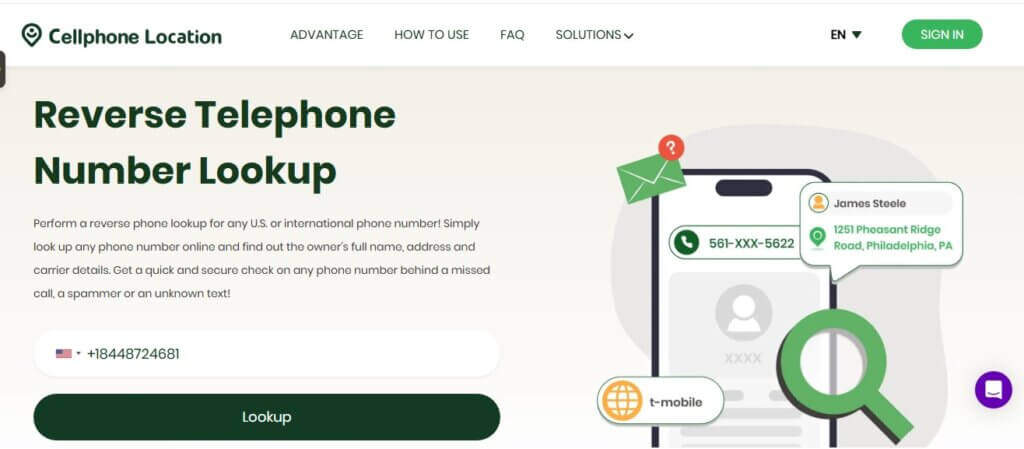Mensagens de texto falsas representam um dos meios mais populares usados por fraudadores para roubar dados pessoais, instalar malware ou enviar dinheiro. Essas mensagens de texto de spam tendem a se apresentar bem, soando e parecendo entidades confiáveis. Pode ser útil aprender mais sobre como identificá-las para preservar sua privacidade financeira e a segurança do seu hardware.
Neste blog, discutiremos alguns exemplos e métodos de identificação e o que fazer caso você receba um.
Exemplos comuns de mensagens de texto falsas
Os fraudadores utilizam diversas estratégias para fazer com que suas comunicações falsas pareçam genuínas e urgentes. É importante conhecer esses sinais de alerta iniciais para que você possa prevenir fraudes e roubo de identidade, além de proteger seu dispositivo.

- Fraudes de prêmios ou loterias – Mensagens informando que você ganhou um prêmio em dinheiro ou vale-presente, mas precisa clicar em um link ou pagar uma taxa para obtê-lo.
- Notificação de entrega falsa– Uma mensagem que se passa por uma mensagem de uma empresa de entrega informando que você deve atualizar seus detalhes de envio por meio de um link duvidoso.
- Golpes de mensagens de texto do IRS – Mensagens falsas alegando que você tem um imposto a pagar ou que há um reembolso aguardando e que você deve fazê-lo agora.
- Tentativas de login suspeitas– Notificação de que houve uma tentativa de login na sua conta e você será solicitado a ser redirecionado para um link de verificação.
O primeiro passo para se proteger contra roubo financeiro e de identidade é identificar esses exemplos.
Como identificar uma mensagem de texto falsa online
Os fraudadores têm suas próprias maneiras de fazer com que mensagens falsas pareçam autênticas. Diferentes sinais de alerta para evitar se tornar uma vítima incluem links suspeitos, linguagem que tenta incutir um senso de urgência ou e-mails enviados por pessoas que você não conhece. A seguir, alguns dos principais indicadores.
Link e anexo suspeitos
Mensagens falsas geralmente têm URLs reduzidas ou links que não correspondem aos sites oficiais. Arquivos ZIP ou outros tipos de anexos podem conter malware que pode destruir seus dados.
São truques que os fraudadores exploram para evitar suspeitas e infectar seu computador. Nunca clique em links suspeitos e nunca baixe arquivos de fontes desconhecidas.
Passos
- Passe o mouse sobre o link para visualizar o URL.
- Compare com o site oficial.
- Evite baixar anexos.
Tom urgente ou ameaçador
Mensagens que pressionam você a agir imediatamente, alegando que sua conta será suspensa ou que você enfrentará problemas legais, são planejadas para burlar seu julgamento. Essa manipulação emocional visa fazer você clicar ou responder sem pensar.
Passos
- Leia com calma antes de agir.
- Verifique com a empresa.
- Ignore ameaças.
Solicitação de informações pessoais
Organizações legítimas raramente solicitam dados sensíveis por mensagem de texto. Mensagens falsas podem solicitar senhas, dados bancários ou números de previdência social. Fornecer essas informações pode levar a roubo de identidade ou fraude. Trate todas essas solicitações como suspeitas, a menos que você possa verificar o remetente.
- Nunca compartilhe dados confidenciais.
- Entre em contato diretamente com a empresa.
- Exclua mensagens suspeitas.
Números de telefone desconhecidos
Mensagens de números desconhecidos, especialmente aqueles com prefixos estrangeiros ou incomuns, podem ser fraudulentas. Golpistas costumam usar números temporários ou falsos para ocultar sua identidade. Só porque um número parece local não significa que seja legítimo.
Passos
- Procure o número online.
- Use ferramentas de pesquisa reversa.
- Bloqueie remetentes desconhecidos.
Mensagens não solicitadas
Se você receber uma mensagem de alguém com quem nunca interagiu, é um sinal de alerta, especialmente se ela contiver ofertas, links ou solicitações. Golpistas enviam mensagens em massa na esperança de que alguém responda e revele informações pessoais.
- Evite clicar em links.
- Não responda a remetentes desconhecidos.
- Denunciar como spam.
Ofertas que são boas demais para ser verdade
Golpistas costumam tentar as vítimas com ofertas irreais, produtos grátis ou recompensas enormes. Se parece bom demais para ser verdade, geralmente é. Essas ofertas visam induzi-lo a fornecer dados pessoais ou fazer pagamentos.
Passos
- Questione ofertas irrealistas.
- Pesquise a empresa.
- Exclua negócios suspeitos.
Como descobrir quem me enviou uma mensagem de um número falso?
Se você quiser identificar um remetente suspeitoUma busca reversa de números de telefone pode ajudar. Sites como o Cellphone Location permitem que você insira um número desconhecido e verifique registros públicos para obter os detalhes do proprietário. Isso pode revelar o nome do remetente, a localização e possíveis golpes anteriores vinculados a esse número.
Para usar este método:
- Basta visitar o site.

- Digite o número na caixa de pesquisa.
- Digite o endereço de e-mail no qual você deseja receber os detalhes.
- Revise o relatório gerado.
Se o número estiver associado a spam, você provavelmente verá denúncias de outros usuários. Embora alguns resultados detalhados exijam uma taxa, os recursos básicos de pesquisa geralmente são gratuitos. Esta é uma maneira rápida de determinar se você está lidando com um golpista ou um contato legítimo.
O que fazer se você suspeitar de uma mensagem de texto falsa
Se você suspeita que uma mensagem de texto é falsa, agir rapidamente pode evitar perdas financeiras e proteger seus dados pessoais. Seguir estas etapas reduz o risco de ser vítima de golpes.
- Não clique no link ou responda
Clicar em links suspeitos pode levar a sites de phishing, infecções por malware ou roubo de identidade. Evite responder à mensagem de texto fraudulenta, pois isso confirma que seu número está ativo. Basta fechá-lo, excluí-lo e executar uma verificação de segurança no seu dispositivo.
- Bloquear o número do remetente
Use as configurações do seu celular para bloquear o remetente e evitar futuras tentativas de golpe. O bloqueio impede novos contatos, reduzindo o risco de ser vítima. Essa ação rápida também pode ajudar a limitar o spam de fontes semelhantes direcionadas ao seu número.
- Denunciar à FTC
Nos Estados Unidos, você pode denunciar mensagens de texto fraudulentas à Comissão Federal de Comércio por meio de Denunciar Fraude. Fornecer detalhes ajuda as autoridades a rastrear e encerrar operações fraudulentas, protegendo você e outras possíveis vítimas em todo o país.
- Avançar para 7726
A maioria das operadoras de celular permite que você encaminhe mensagens suspeitas para o número 7726 (SPAM) gratuitamente. Isso alerta sua operadora para investigar e bloquear o remetente. Encaminhar mensagens de texto fraudulentas também fortalece os sistemas de filtragem de spam, dificultando que golpistas ataquem outras pessoas.
Manter-se proativo reduz o risco de roubo de identidade e ajuda as autoridades a rastrear atividades fraudulentas. Mantenha sempre o software de segurança do seu dispositivo atualizado para maior proteção.
Perguntas frequentes
- O que acontece se você clicar em um mensagem de texto falsa?
Clicar pode levar a sites de phishing, downloads de malware ou golpes que roubam seus dados. Saia imediatamente, evite mais interações e execute uma verificação completa de segurança do dispositivo.
- Alguém pode obter minhas informações por mensagem de texto?
Sim — links, anexos ou respostas confidenciais podem expor seus dados. Ignore e exclua mensagens suspeitas e mantenha o software de segurança do seu dispositivo atualizado para impedir acesso não autorizado.
- Como saber se a pessoa para quem você está enviando mensagens é real?
Usar pesquisa reversa de telefone, verifique o estilo de comunicação consistente e verifique por meio de canais confiáveis. Evite compartilhar dados pessoais até confirmar sua autenticidade e confiabilidade.
Conclusão
Mensagens de texto falsas estão cada vez mais sofisticadas, mas com consciência e cautela, você pode evitar ser vítima delas. Fique atento a sinais de alerta, como links suspeitos, linguagem urgente ou solicitações de informações pessoais. Use ferramentas de verificação em caso de dúvida e denuncie golpes para ajudar a proteger outras pessoas. Ao se manter alerta e informado, você protege seus dados pessoais e evita violações de segurança dispendiosas.